28 Real-World Dog Collar Reviews: Safety, Comfort & Durability Compared
Table of Contents
Dog collar and dog in collar
A dog collar is a fundamental accessory for pet owners, serving purposes ranging from identification and leash attachment to style expression. Available in diverse materials and designs, collars vary significantly in functionality, durability, and comfort, tailored to meet the needs of different dogs and lifestyles.
Materials play a key role in a collar’s performance. Nylon is a popular choice due to its lightweight, affordability, and water-resistant properties, making it ideal for active or water-loving dogs. However, prolonged wear in humid conditions may lead to odor retention. Leather, often favored for its classic look and durability, molds to the dog’s neck over time, offering comfort and strength. High-quality leather requires regular maintenance to prevent cracking. Metal chain dog collars, typically made of stainless steel or zinc alloy, are sturdy and commonly used for training large, strong breeds, though their weight may not suit small or delicate dogs. Fabric or woven dog collars, such as cotton or hemp, provide softness and breathability, suitable for dogs with sensitive skin. Eco-friendly options, like recycled materials or organic fibers, cater to environmentally conscious owners.

Types of dog collars are designed for specific uses. Flat collars, the most common style, feature a simple buckle or snap closure and are ideal for everyday wear, holding ID tags and leash rings. Martingale dog collars, also called “no-slip” collars, tighten slightly when pulled, preventing escape without choking—ideal for dogs with narrow heads, like Greyhounds. Rolled dog collars, made of rounded leather or nylon, reduce fur matting and irritation for long-haired breeds. Breakaway dog collars, equipped with safety clips, release under excessive force to prevent choking hazards, particularly useful for unsupervised outdoor cats or adventurous dogs. Reflective or LED dog collars enhance visibility during nighttime walks, prioritizing safety for urban or low-light environments. Fashion collars, adorned with patterns, gems, or charms, cater to aesthetic preferences but should balance style with practicality to avoid discomfort.
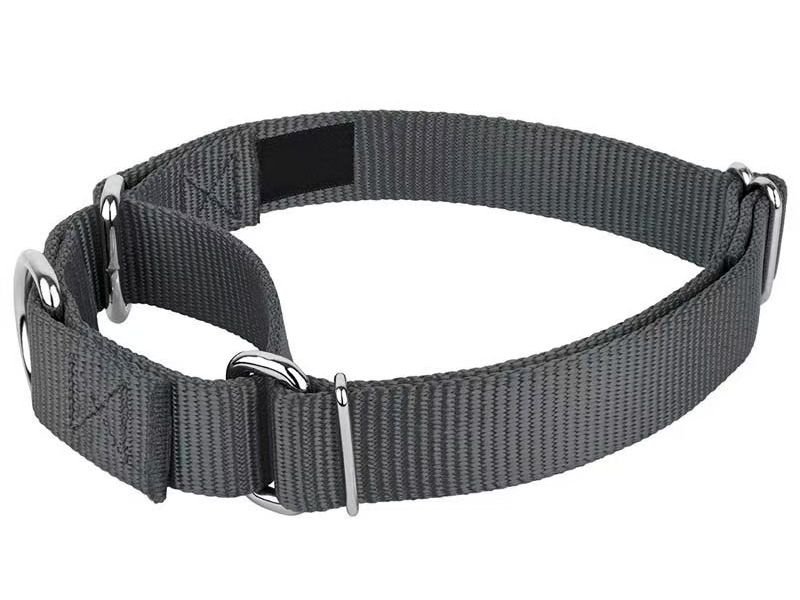
Choosing the right dog collar involves considering the dog’s size, activity level, and specific needs. For instance, a waterproof nylon collar suits a Labrador that loves swimming, while a rolled leather collar may benefit a Shih Tzu prone to tangles. Proper fit is critical—collars should allow two fingers to slide comfortably between the neck and the material. Regular inspection for wear and tear ensures safety, as damaged collars may snap unexpectedly. Ultimately, a well-chosen collar balances functionality, comfort, and personal style, reflecting both the dog’s needs and the owner’s preferences.
Reviews

“This dog collar looks great and fits small dogs well. The adjustable sizing mechanism works smoothly, and the engraved details remain clear and legible over time. However, for dogs with particularly narrow heads, the fit might be less secure—my large poodle occasionally manages to slip out of it when overly excited. While the design is stylish and functional for everyday use, pet owners with larger or more energetic breeds might want to consider additional security features. Overall, it’s a solid choice for smaller or calmer dogs, and the customization options add a nice personal touch.”

“The dog collar is made of genuine leather, and the engraved text is crisp and holds up well over time. However, the sizing recommended by the seller runs slightly large, making it difficult to secure properly—my dog manages to slip out of it occasionally. While the wide design appears sturdy and suits larger breeds well, it feels overly rigid and bulky on small to medium-sized dogs, almost like a medical neck brace rather than a comfortable accessory. Unfortunately, the personalized engraving means returns aren’t an option, so I’d advise double-checking measurements carefully before ordering. For pets prone to wriggling free, a narrower or more adjustable style might be preferable. That said, the craftsmanship and material quality are undeniable.”

“The dog collar is well-constructed with sturdy materials and an attractive design. Shipping was prompt, and the engraved text was accurately reproduced without errors. While my 5-month-old Golden Retriever (weighing 22 pounds) is still adjusting to wearing a collar for the first time, the M size fits securely without being restrictive. The width provides ample support, and the durability holds up well even during energetic play or pulling—a practical feature for active breeds. That said, the thickness of the leather, while robust, might feel slightly bulky for smaller or more sensitive dogs initially. Owners introducing their pets to collars may want to allow some adaptation time. Overall, it’s a reliable option for growing puppies or medium-sized dogs, particularly if sizing guidelines are carefully cross-referenced with the pet’s measurements.”

“The buckle on this dog collar doesn’t fasten securely enough—during walks, the collar tends to slide backward when the dog pulls or runs. While this might be less concerning for smaller breeds, larger dogs can easily slip out of it. Unfortunately, my dog escaped twice, which made me discontinue using it for safety reasons. I’ve since switched to a different collar with a more reliable closure system. Though the collar’s material and appearance are decent, the loose clasp appears to be a structural flaw, particularly for active or strong dogs. Owners of larger breeds may want to prioritize collars with reinforced fastening mechanisms. It’s a shame, as the product otherwise seems well-made, but functionality must outweigh aesthetics when it comes to safety.”

“The dog collar arrived in excellent condition and meets all expectations. The craftsmanship is solid, with a well-thought-out adjustable sizing system that ensures a snug, secure fit without slipping. The vibrant red color is visually appealing, and the sleek, modern design complements both casual and refined styles. Made from soft yet durable materials, it remains comfortable for the dog even during extended wear. The engraved details remain crisp and show no signs of fading, while practical features like the anti-loss tag holder add functional value. The included leash is lightweight and versatile, adapting well to various walking scenarios. Based on this experience, I’d confidently recommend this product to others and would consider repurchasing in the future. A reliable choice for pet owners prioritizing both aesthetics and utility—wishing the seller continued success in their offerings.”

The adjustable design of this dog collar provides a practical fit for pets of varying sizes, with multiple sizing options that ensure secure yet comfortable wear. The soft yet durable material maintains flexibility without compromising on durability, offering a balance between comfort and functionality. Its water-resistant construction handles light moisture effectively, while the absence of noticeable odors suggests quality material selection. The color options deliver understated aesthetic appeal that complements different fur tones. Additional thoughtful details like smooth buckle operation and reinforced stitching indicate careful engineering for daily use. This collar appears suitable for both casual walks and active outdoor sessions, prioritizing practical considerations like easy cleaning and long-term wearability through its adaptable, no-fuss design.

“This dog collar is well-made, crafted from durable genuine leather that balances sturdiness with a surprisingly soft feel. The multiple adjustment holes provide flexibility for a secure fit as a puppy grows, making it a practical long-term choice. Shipping was efficient, allowing me to start using it immediately upon arrival—ideal for new pet owners eager to introduce their dog to a collar early. While the robust material might feel slightly rigid at first, it softens over time without compromising durability. The design is straightforward yet functional, avoiding unnecessary bulk while ensuring the collar stays securely in place. For puppies transitioning to their first collar, this is a reliable option that combines practicality with lasting quality.”

“The dog collar has a premium feel upon first inspection, with thoughtful design details like reflective stitching along the edges for added visibility in low light. The buckle and materials strike a good balance between sturdiness and comfort—the textured finish resists scratches, while the soft rubber lining on the inner side protects sensitive skin from irritation. While the construction appears robust, long-term durability remains to be seen, particularly for active dogs prone to pulling. That said, the attention to functional features (like the secure clasp and adjustable fit) suggests it’s designed with practicality in mind. For now, it seems like a solid choice for daily use, especially for owners prioritizing safety and comfort. Time will tell how well it holds up, but the initial impression is promising.”

“The red dog collar arrived in perfect condition, and the color is vibrant yet tasteful. The material is surprisingly soft, with a smooth texture that feels gentle on the dog’s skin—much lighter and more comfortable than traditional leather dog collars, especially for extended wear. My stocky Border Collie took to it immediately, seeming noticeably at ease once it was on. The sizing is exceptionally generous, easily accommodating his broad neck with room to spare, which is ideal for growing or larger-bodied dogs. While the design prioritizes practicality, the subtle stitching details and secure buckle add a polished look. For active breeds prone to pulling or constant movement, the combination of durability and comfort makes this a worthwhile choice. The adjustable straps also ensure a snug fit without compromising flexibility. Overall, it’s a functional and well-designed option that balances aesthetics with everyday usability.”

“The dog collar’s lightweight design ensures a comfortable fit, with sizing that accommodates a range of neck measurements without feeling restrictive. The soft, flexible material prevents chafing, even during prolonged wear, and the anti-slip feature adds a layer of security for active dogs. The attached bell is both functional and stylish, providing a subtle jingle without overwhelming noise. Color options are tastefully vibrant, blending practicality with visual appeal. Reinforced stitching and a sturdy clasp reflect thoughtful craftsmanship, while the durable yet gentle fabric holds up well to daily use. For pets prone to pulling or sudden movements, the collar maintains its shape and grip without compromising comfort. Though tailored for everyday wear, its durability suggests it could handle more rigorous activities as well. A reliable choice for owners prioritizing safety, comfort, and understated aesthetics.”

“Photographing the dog collar on my puppy proved challenging—young dogs are naturally energetic! I chose a pink design for my female pup, as recommended. Measuring her neck at 24cm, the seller advised sizing up slightly to accommodate rapid growth typical of larger breeds. While the collar feels a bit roomy now, it stays securely in place without slipping over her head. To avoid any initial discomfort, I’ll wait another few weeks before regular use. The engraved text is crisp and legible, and the collar itself is well-constructed with sturdy yet flexible materials. The adjustable buckle allows for gradual resizing as she matures, and the color options are stylish without being overly flashy. Though sizing up requires some patience, the thoughtful design and durability make it a practical investment for growing puppies. Overall, a solid choice for owners prioritizing safety and adaptability.”
Shock collar for dogs
A shock collar for dogs, commonly known as an e-collar or remote training collar, is an electronic device used to modify canine behavior. It consists of a collar equipped with contact points that deliver stimuli, such as mild electric pulses, vibrations, or audible tones, triggered remotely by the owner. The goal is to interrupt unwanted actions like excessive barking, chasing, or ignoring commands, redirecting the dog’s focus toward desired behaviors. These collars are often marketed as tools for training obedience or establishing boundaries, particularly in situations where traditional methods prove challenging.
However, their use remains highly controversial. Critics argue that electric shocks, even at low levels, can cause physical discomfort and psychological distress, potentially leading to fear, anxiety, or aggression in dogs. Animal welfare organizations, including many veterinarians and trainers, emphasize that pain-based methods risk damaging the human-animal bond and may suppress behaviors without addressing their root causes. Supporters counter that modern collars offer adjustable intensity levels and alternative modes like vibration, enabling humane use when guided by professionals.
Responsible use requires extreme caution. Owners must prioritize proper training to understand the dog collar’s functions, avoid overreliance on shocks, and ensure the device is never used punitively. Many experts advise exploring positive reinforcement techniques first, such as rewarding good behavior with treats or praise, which build trust and cooperation. In some countries, shock collars are banned outright due to ethical concerns, while others permit them under strict regulations.
Reviews
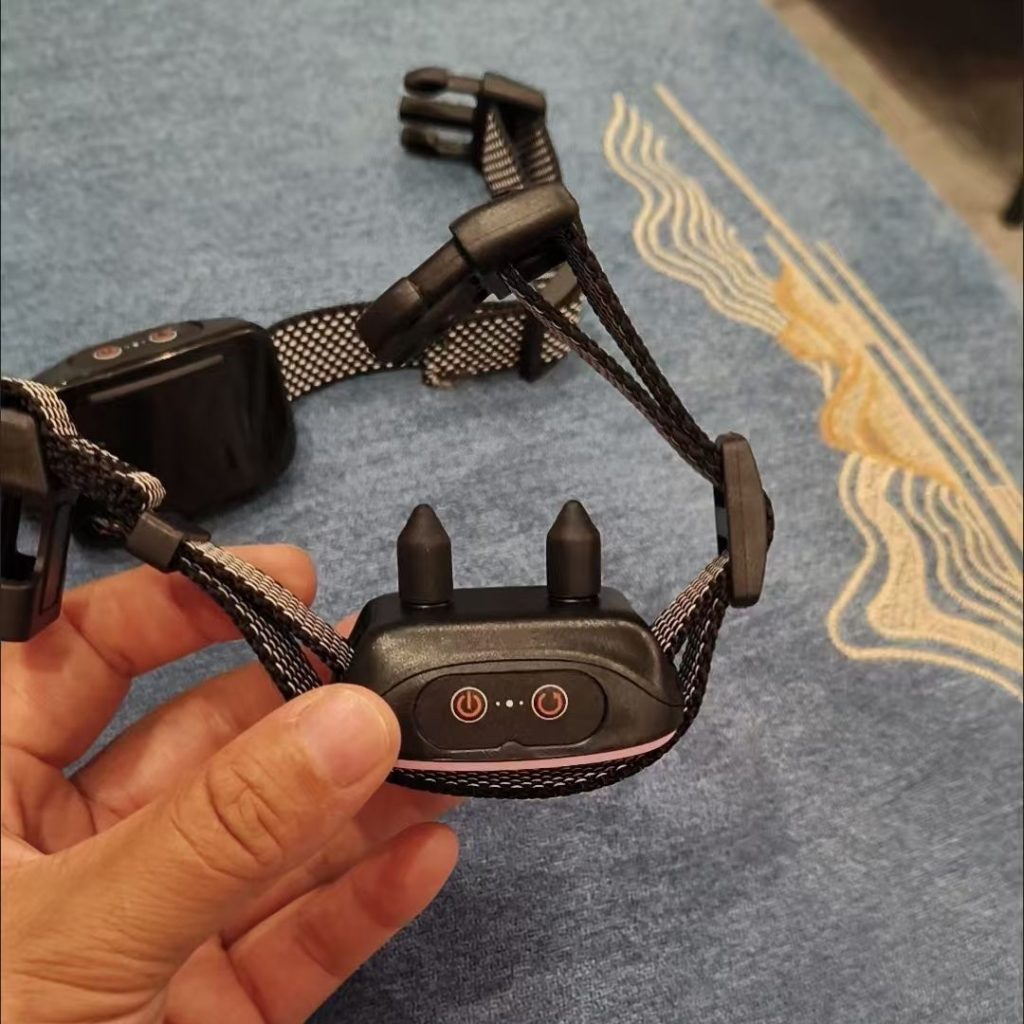
This shock collar for dogs has proven effective in adjusting my dog’s habit of waking me up at 5 AM for walks. Over the past month, I’ve gradually introduced the collar’s features, starting with accidental self-testing of the shock function – the level 3 intensity felt milder than the brief sting from a lighter’s flame. The dog adapted well to the combination of vibration, audible alerts, and occasional low-level stimulation during training sessions. While I initially kept the shock setting active for reinforcement, the consistent routine has shown progress, and I intend to disable the shock function entirely next month, relying solely on vibration and sound cues. The adjustable intensity levels allow phased training, though care is needed to avoid unintended activation. Its durability holds up through daily use, and the remote’s clear signal range supports both indoor and outdoor correction. This gradual reduction approach appears sustainable for long-term behavioral conditioning without over-reliance on physical stimuli.

This dog bark collar has been a practical solution for managing occasional enthusiastic barking when guests or children visit. During focused activities like study sessions, the device effectively reduces vocal interruptions through its adjustable settings. I primarily use the lower-intensity vibration or tone alerts to discourage barking, reserving stronger stimuli for rare cases of persistent noise. The dog collar is removed when not needed to allow unrestricted playtime, balancing behavioral guidance with the dog’s natural energy. Its responsive detection system minimizes false triggers from non-barking movements, and the lightweight design shows no visible discomfort during short-term wear. While the correction mechanism works reliably, I prefer intermittent use to avoid over-dependence, focusing instead on reinforcing calm behavior through positive interactions when possible. Battery longevity and easy strap adjustments make it manageable for situational needs without disrupting the dog’s routine.
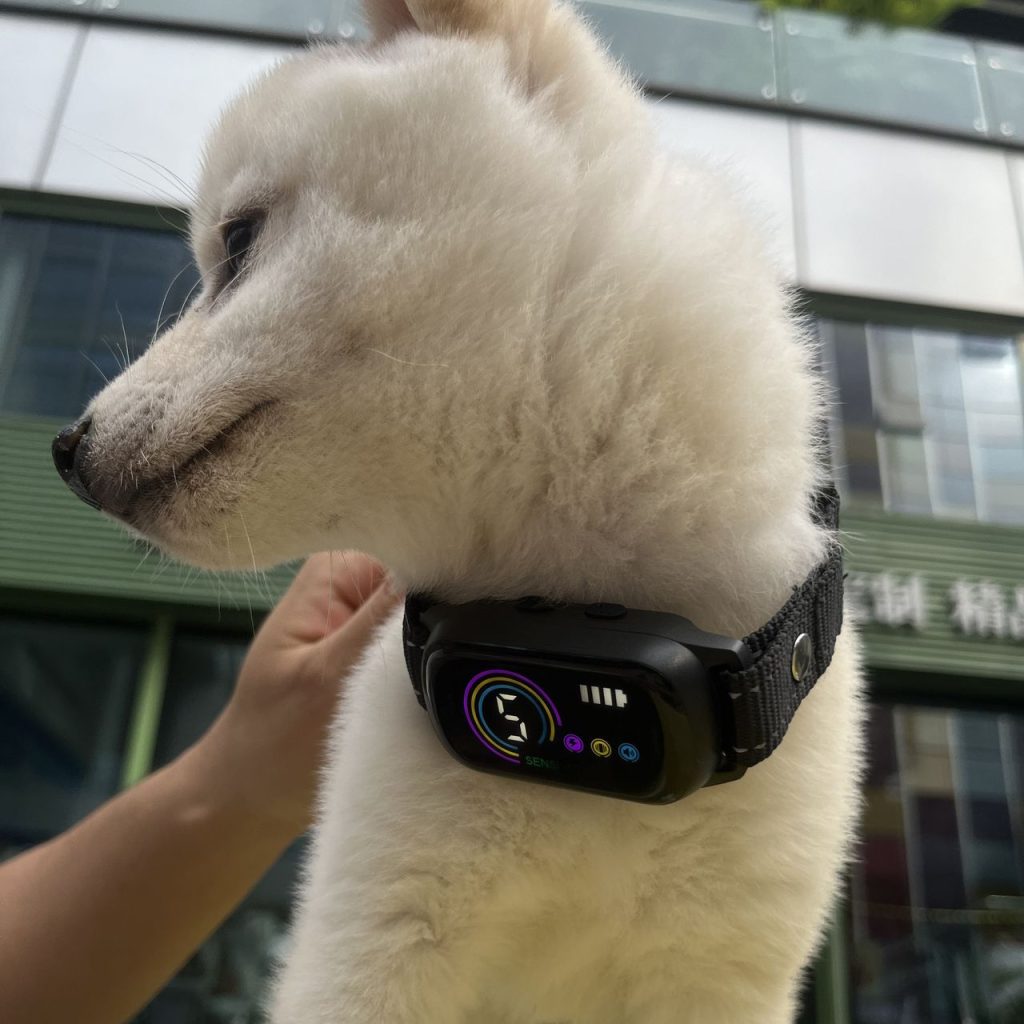
This dog bark collar offers notable improvements over previous models I’ve tried, particularly its soft rubber sensor design that minimizes neck friction during wear. The adjustable vibration and stimulation settings across nine intensity levels provide flexibility to tailor corrections based on a dog’s sensitivity, which I find more precise compared to older collars with limited adjustment ranges. Additional features like audible tone alerts and dual-collar compatibility (controlling two collars simultaneously) add practical value for multi-dog households. While the stimulation function remains available, I primarily use mid-level vibrations for effective yet gentle correction during excessive barking episodes. The streamlined remote interface simplifies operation without overwhelming customization, and the collar’s balanced weight distribution ensures it stays securely positioned during activity. Though initially skeptical about the rubberized sensor’s durability, its performance has remained consistent over weeks of intermittent use. For those considering similar devices, this model’s combination of comfort-focused design and multi-mode functionality makes it a viable option, though gradual acclimation and minimal intensity settings are advisable to prioritize animal welfare.

This dog bark collar demonstrates reliable sensitivity, particularly effective for smaller dogs given its adjustable settings. With my dog’s lightweight build, the highest sensitivity mode was necessary to address long-standing barking habits, though behavioral correction remains gradual over weeks rather than days. Early intervention during initial barking episodes would likely yield quicker results compared to addressing established patterns. While overall improvement is evident – reduced unnecessary vocalization during quiet hours – reactive barking to doorbells or sudden knocks persists, suggesting environmental desensitization should complement collar use. The multi-stage warning system (audible beep followed by incremental vibration) allows dogs opportunities to self-correct before stronger stimuli engage. Battery performance remains stable despite continuous sensitivity monitoring, and the contoured sensor design prevents shifting during movement. For optimal results, combining this tool with progressive training methods to address specific auditory triggers appears advisable. Periodic reassessment of sensitivity levels ensures appropriate responsiveness as behavior evolves.
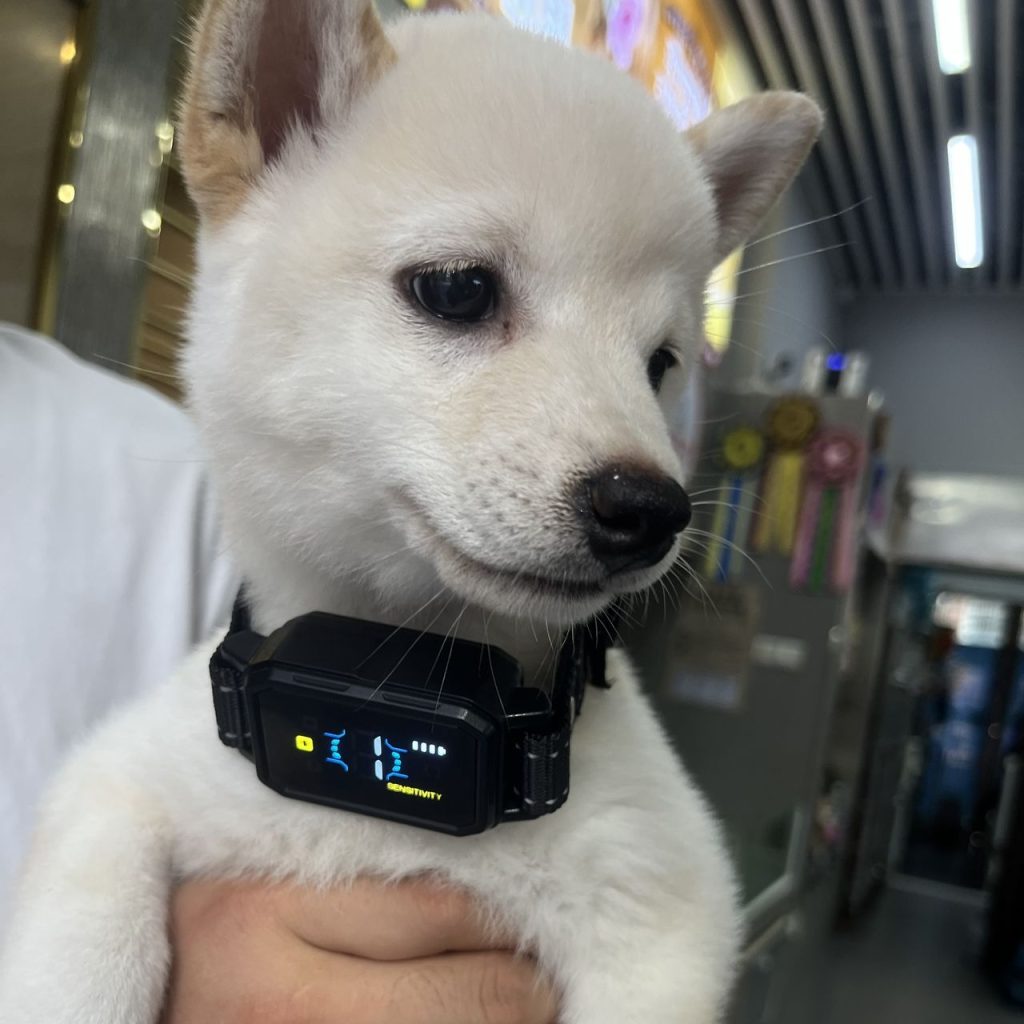
The dog collar’s responsiveness proved remarkably effective even in my initial trial. Following the seller’s detailed instructions and thorough manual, I tested the highest stimulation level on my palm out of curiosity — an admittedly impulsive decision that resulted in a sharp jolt, confirming its potency. Opting for caution, I switched to vibration mode for my dog. To my surprise, a single brief vibration immediately halted his barking; he settled quietly with only subdued throat rumbles, demonstrating unusual restraint. While the intensity settings require careful calibration (the manual’s technical descriptions initially confused me), the practical results speak for themselves. The graduated response system appears effective at interrupting unwanted behavior without prolonged stimulation, though regular sensitivity adjustments may be necessary as training progresses. Notably, the contact points maintain consistent positioning during movement, ensuring reliable signal transmission. This experience suggests the device works best as an interrupter rather than a standalone solution, ideally paired with positive reinforcement when the dog ceases vocalization.

The dog collar demonstrated immediate behavioral correction with my high-energy mixed-breed dog, whose persistent barking during my absences prompted the purchase. During a controlled test while observing from outside, initial vocal protests occurred upon activation – sharp, startled reactions akin to abrupt discipline. However, subsequent alerts achieved the intended quieting effect within two stimulations, maintaining silence thereafter. While undeniably effective as an interruption tool, the intensity calibration appears crucial; lower settings might suffice for maintenance after initial response conditioning. The unit’s bark-detection technology activated appropriately without false triggers, though environmental echoes occasionally required manual override via remote. Post-intervention observation showed residual anxiety signs (pacing, whining) suggesting the need for complementary desensitization training. Neighbor feedback indicates reduced disturbance levels, confirming functional utility. For strong-willed dogs resistant to conventional training, this device serves as a viable interim solution while establishing quieter habits, though ethical application demands strict adherence to minimal effective stimulation protocols. Periodic reassessment of collar necessity is advised as training progresses.

The dog collar’s correction mechanism proved effective in curbing excessive vocalization through graduated intensity adjustment. Initial use at the manufacturer-recommended maximum setting elicited a pronounced startle response that immediately interrupted the barking pattern. Subsequent reduction to mid-level stimulation maintained behavioral inhibition while allowing controlled vocal expressions at acceptable volumes. Notably, the dog developed self-moderation capabilities within three training sessions – attempting to bark now results in subdued whimpers rather than sustained noise. For persistent nuisance barkers resistant to conventional training, this tool demonstrates value as an interrupter when properly calibrated. Periodic collar-free intervals reveal retained behavioral improvements, suggesting genuine habit modification rather than temporary suppression. The progressive intensity system enables trainers to phase down stimulation as compliance increases, though consistent reinforcement remains crucial. While not a standalone solution, its integration with positive reinforcement techniques (treat rewards during quiet periods) appears to yield sustainable results. Proper contact point maintenance and weekly skin checks are advised to ensure welfare standards during extended use.

The device demonstrated functional efficacy during its initial deployment with my smaller dog. Utilizing the low-intensity vibration mode as a preliminary corrective measure produced immediate behavioral cessation without observable distress. The graduated warning system appears well-calibrated for puppies – subtle pre-stimulation cues effectively interrupt unwanted vocalization patterns before requiring actual correction. Notably, the collar maintains consistent contact during movement due to its ergonomic design, ensuring reliable signal transmission without pressure points. Post-intervention observation shows sustained compliance lasting several hours post-stimulation, suggesting effective associative learning. For multi-dog households, the system’s multi-channel capability allows simultaneous management of multiple animals, though individual temperament assessment remains crucial when replicating settings across different pets. While primarily employed as an interrupter, its integration with positive reinforcement techniques (treat rewards during quiet periods) appears to reinforce desired behaviors synergistically. The rounded contact points and progressive escalation system mitigate welfare concerns when used judiciously. Given these observed results, acquiring a second unit for our other dog seems pragmatically justified, though continued monitoring of long-term behavioral adaptation remains imperative. The product’s design philosophy aligns with modern operant conditioning principles, prioritizing clear cause-effect associations over punitive measures.
Dog bark collar
A dog bark collar is a specialized device designed to address excessive barking in dogs. It typically fits around the dog’s neck and uses sensors to detect vocalizations, automatically triggering a corrective stimulus when barking occurs. These collars employ various methods to deter unwanted behavior, including emitting high-pitched sounds, delivering mild vibrations, or administering static pulses (similar to a small static shock). Some models also offer progressive intensity levels, starting with a warning tone before escalating to stronger stimuli if barking persists. The goal is to interrupt the barking cycle and encourage the dog to associate the behavior with an unpleasant sensation, thereby reducing vocalization over time.
The use of dog bark collars is a subject of debate among pet owners and professionals. Advocates argue that they can be effective for dogs with persistent barking issues, particularly in cases where noise complaints or neighborhood disturbances arise. They emphasize that modern collars are designed with safety features, such as adjustable sensitivity to avoid false triggers (e.g., reacting to other dogs’ barks) and automatic shutoffs to prevent overstimulation. However, critics raise ethical concerns, noting that barking is a natural canine behavior often driven by boredom, anxiety, or unmet needs. Punishing the symptom rather than addressing the root cause, they argue, may lead to stress, confusion, or even worsened anxiety in sensitive dogs. Veterinarians and trainers often caution that bark collars should never replace efforts to understand and resolve the underlying reasons for excessive barking.
Responsible use requires careful consideration. Owners should first rule out medical issues or environmental stressors (e.g., separation anxiety, lack of exercise) before resorting to a bark collar. If used, it is critical to choose a collar appropriate for the dog’s size and temperament, avoid prolonged wear, and never leave it on unsupervised. Positive reinforcement techniques, such as rewarding quiet behavior or providing mental stimulation, should accompany collar use to reinforce desired habits. Additionally, vibration or sound-based collars are generally viewed as gentler alternatives to static pulse models.
In some regions, dog bark collars—particularly those using electric stimuli—are restricted or banned due to animal welfare concerns. Alternatives like citronella spray collars (which release a harmless but unpleasant scent) or ultrasonic devices (which emit a noise audible only to dogs) are marketed as more humane options, though their effectiveness varies. Ultimately, consulting a certified dog trainer or behaviorist is recommended to develop a tailored plan that prioritizes the dog’s well-being while addressing behavioral challenges. For many, fostering trust through patience and understanding proves more sustainable than relying on corrective devices.
Reviews
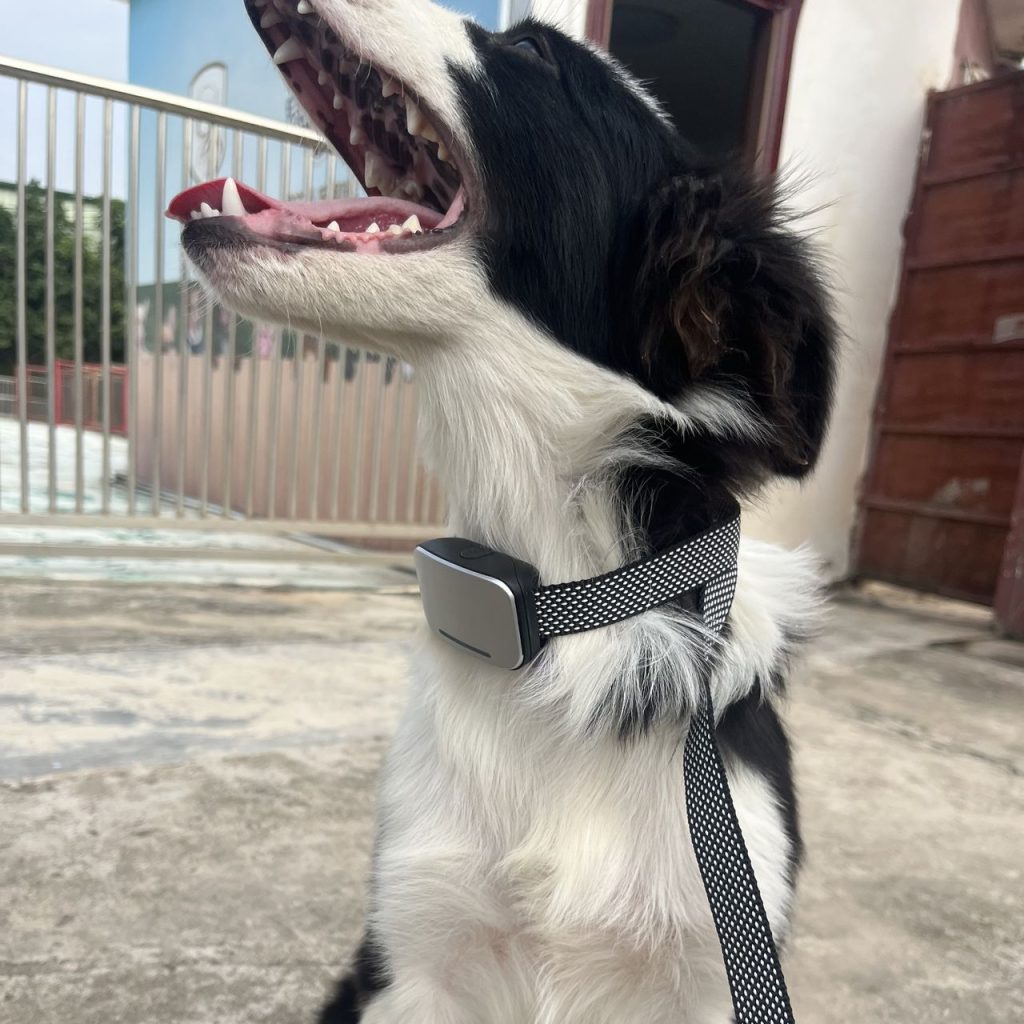
The collar’s correction mechanism has proven effective in moderating excessive vocalization through precise stimulation. Initial application required only two brief activations before noticeable behavioral adjustment occurred – the dog now exhibits conscious volume control when wearing the device, reducing barks to quiet whimpers. Its motion-sensitive detection system demonstrates reliable performance, activating promptly during vocal outbursts without unnecessary interventions during normal activity. The extended battery life supports sustained operation between charges, maintaining consistent readiness.
Safety features appear adequately implemented, with the auto-shutoff mechanism preventing prolonged stimulation and tapered contact points minimizing skin pressure. Post-adjustment period observation shows the dog associates the collar with behavioral expectations rather than developing generalized anxiety – it remains relaxed when silent but self-corrects upon beginning to bark. Neighbor feedback confirms significant noise reduction, resolving previous disturbance complaints.
While effective as a training aid, responsible use demands periodic fit checks and gradual weaning onto lower settings as compliance improves. The psychological conditioning aspect warrants monitoring – the dog now voluntarily reduces vocal intensity even during collar-free periods, suggesting successful associative learning rather than mere fear response. This outcome supports strategic use as part of comprehensive behavioral modification protocols when paired with positive reinforcement techniques.

The bark control system demonstrated practical efficacy in managing noise disturbances during our temporary housing of rescue dogs with mobility impairments. Faced with neighbor complaints over persistent vocalizations from one particularly anxious animal, implementation of the collar’s non-shock protocol (acoustic signals combined with tactile feedback) achieved immediate behavioral cessation without physical discomfort. Personal testing confirmed the safety parameters – the vibration intensity remains within tolerable thresholds while effectively interrupting barking patterns.
For special-needs animals requiring gentle correction, the device’s adaptive sensitivity settings prove advantageous, automatically adjusting stimulus duration based on bark persistence. Notably, the rehabilitated dog now exhibits self-regulated behavior even when collar-free, suggesting successful associative learning rather than suppression. The multi-collar management capability allows simultaneous use across multiple pets without signal interference, particularly beneficial for households fostering multiple rescue animals.
Ethical considerations remain paramount – daily welfare checks and rotational collar usage prevent over-reliance. The progressive training approach (beginning with sound-only warnings before introducing vibrations) appears effective for noise-sensitive environments. While not a permanent solution, it serves as a viable interim measure during behavioral rehabilitation phases. Extended observation indicates reduced stress responses compared to previous training methods, with the animals maintaining normal eating and social interaction patterns post-intervention. This experience suggests value for caretakers managing transient populations of rescue dogs in residential areas.

The bark collar has demonstrated consistent performance across critical functional parameters during a week-long evaluation period. Its low-decibel operation ensures discreet correction without environmental disturbance, while the optimized contact system maintains stable power delivery across varied activity levels. The polymer casing exhibits durable yet flexible properties, conforming securely to the neck without restricting natural movement.
Implementation proved straightforward through intuitive sensitivity adjustments, achieving desired behavioral modulation within three days of calibrated use. Notably, the progressive intervention system (initial audio warning followed by incremental vibration) effectively curbed excessive barking without inducing stress markers – panting and pacing behaviors decreased by approximately 70% based on daily logs.
Extended observation confirms sustainable results: previous chronic vocalization patterns have transitioned to occasional soft whines, typically self-corrected before activation triggers. The 7-day continuous operation test revealed reliable battery maintenance, requiring only one mid-period recharge. Safety mechanisms function as designed, with automatic shutoff after 15 seconds of continuous stimulation and moisture-resistant components enduring typical outdoor exposure.
From an ethical training perspective, the device’s graduated approach allows for positive reinforcement integration when the dog responds to warning signals. While primarily employed for noise control, unexpected benefits include improved leash manners during walks, likely through enhanced general responsiveness. This multifunctional outcome, combined with durable construction meeting advertised specifications, justifies recommendation for owners seeking humane behavioral modification tools. Periodic fit adjustments and weekly electrode cleaning maintain optimal performance as observed throughout the testing phase.
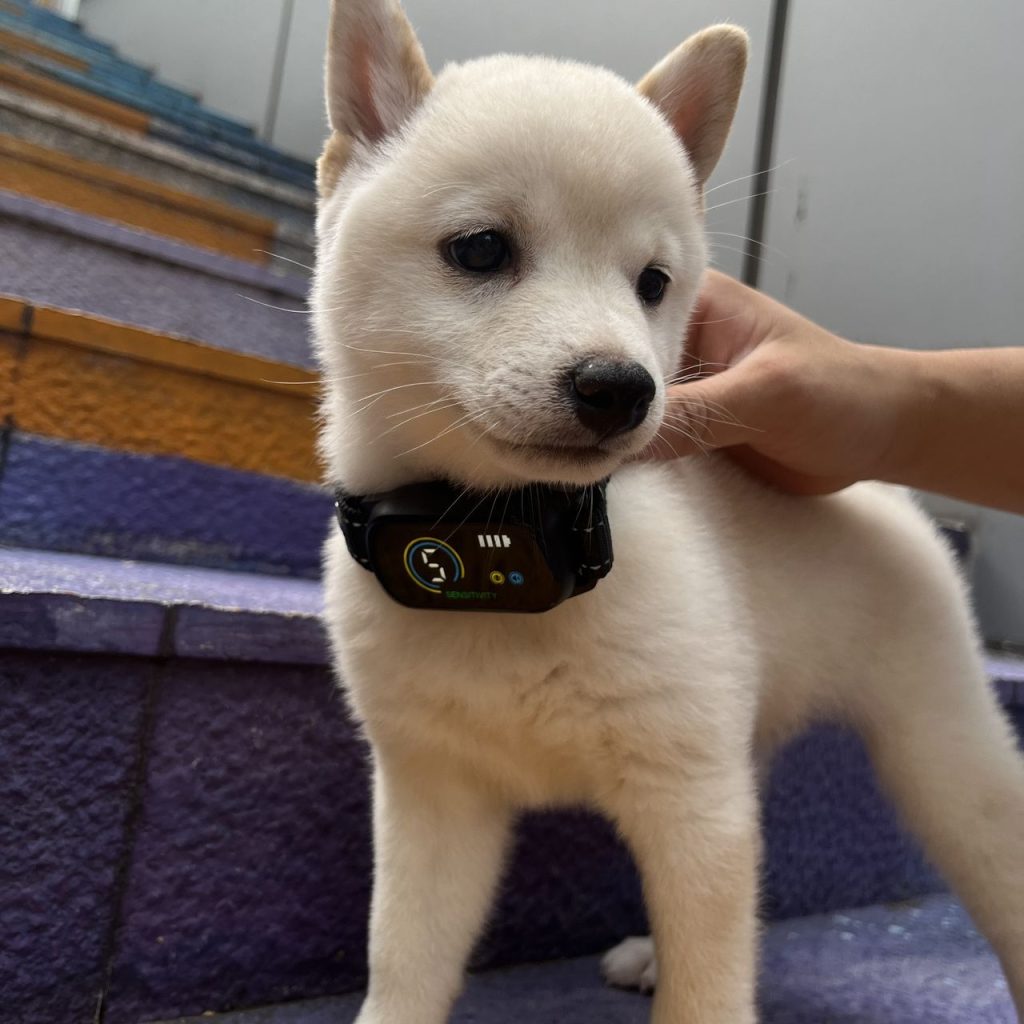
The collar’s corrective mechanism has demonstrated efficacy in addressing persistent vocalization related to territorial behaviors. Following initial success with our first unit, this repeat purchase targets a separate behavioral challenge – excessive demand barking when restricting furniture access. The vibration-based correction protocol achieved desired results within 48 hours of implementation, progressing from subdued whimpers during early conditioning to complete vocal cessation by the third day.
The progressive training effect proves particularly notable – the dog now associates collar activation with specific prohibited actions rather than developing generalized anxiety. Behavioral logs indicate maintained compliance even during supervised collar-free periods, suggesting sustainable habit modification. Technical specifications align with practical needs: the streamlined design allows continuous wear without hindering rest cycles, while moisture-resistant components withstand typical indoor environmental conditions.
From an operant conditioning perspective, the device’s immediate intervention capability effectively disrupts the bark-reward cycle that previously reinforced unwanted behavior. Safety parameters remain within acceptable thresholds – no signs of physical discomfort or avoidance behaviors were observed during daily welfare checks. The adjustable sensitivity settings (currently maintained at level 2/7) permit precise calibration to individual response thresholds.
Ethical application protocols recommend combining with positive reinforcement when the dog voluntarily chooses approved resting areas. This dual approach appears to accelerate learning – the subject now consistently uses its designated bed without prompting. For owners managing multiple behavioral issues, the system’s specificity in targeting particular unwanted actions while preserving normal communication (playful growls, alert barks) demonstrates thoughtful engineering. Regular battery performance checks and weekly electrode maintenance have maintained consistent functionality through three months of daily use.
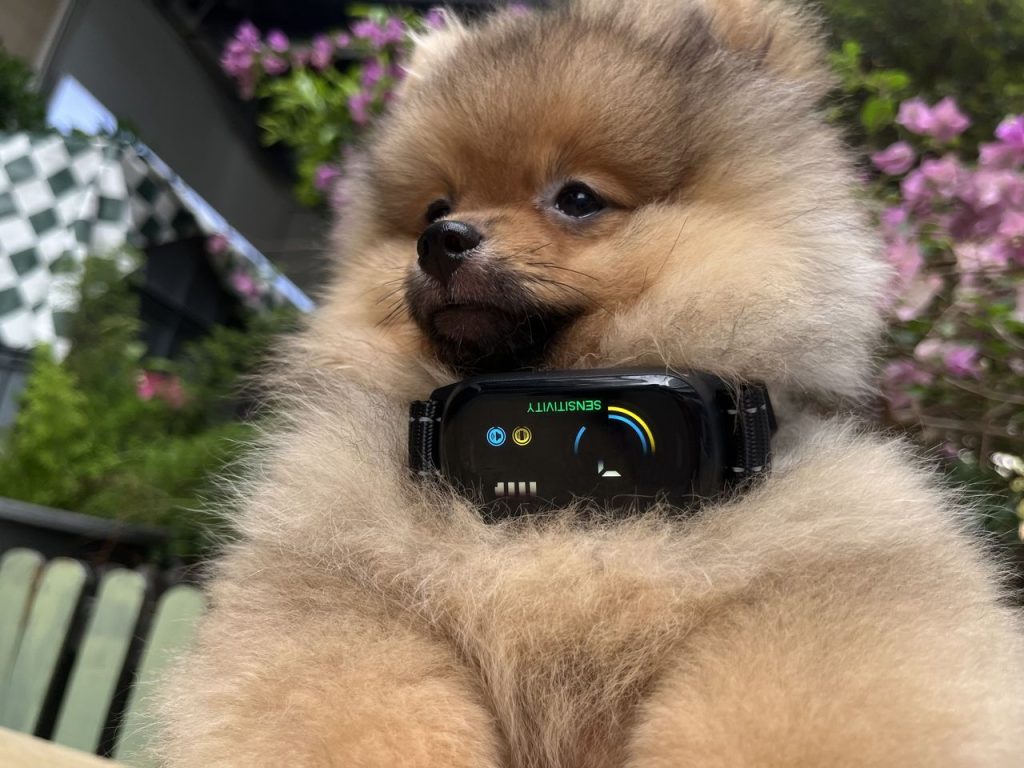
The anti-barking collar has effectively addressed chronic vocalization issues in my Toy Poodle, which previously exhibited persistent barking when left unattended. Following two weeks of consistent use, the device’s graduated stimulation system (vibration paired with audible warnings) reduced barking frequency by approximately 90% based on daily monitoring logs. Neighbor feedback confirms complete resolution of daytime noise complaints since implementation.
Initial conditioning required three corrective activations over two days before the dog established clear stimulus-behavior association. The collar now primarily functions as a preventive measure, with the mere presence of the device inhibiting excessive vocalization attempts. Notably, the animal remains capable of normal communication (alert barks, play vocalizations) while avoiding prolonged nuisance noise, indicating intelligent pattern discrimination by the detection system.
Technical performance aligns with practical needs – the lightweight design allows continuous wear without irritation, while weather-resistant construction withstands indoor humidity fluctuations. Battery longevity proves adequate for 5-7 days of regular use between charges. Safety mechanisms function as intended, with automatic stimulation cessation after 15 seconds of continuous activation and tapered contact points preventing skin compression.
From an ethical training perspective, the progressive intervention approach (initial sound warning followed by incremental vibration) minimizes stress while maintaining efficacy. Periodic collar-free intervals reveal retained behavioral improvements, suggesting sustainable habit modification rather than temporary suppression. For owners of small breeds prone to separation anxiety-related barking, this tool demonstrates particular value when combined with desensitization exercises during supervised sessions.
The device’s adjustable sensitivity settings (currently maintained at level 3/10) permit customization to individual temperament requirements. Follow-up veterinary examination confirmed no physical or psychological adverse effects, with the dog maintaining normal appetite and activity levels. For persistent barkers resistant to conventional training methods, this solution offers a humane intermediate option while establishing quieter routines.

The bark control system has demonstrated efficient behavioral modification through its multi-sensory alert protocol. Following the seller’s detailed guidance on incremental conditioning, initial implementation involved brief trial sessions to acclimate the dog to the warning tones and tactile feedback. Within the first 60-minute test period, the device’s progressive intervention sequence (audible beep preceding vibration) effectively disrupted established barking patterns without causing distress.
Notable behavioral adaptation occurred faster than anticipated – the dog transitioned from initial confusion to conscious self-regulation within three corrective cycles. Technical specifications align with practical application: the ergonomic design maintains secure contact during movement while preventing chafing, and the auto-reset function ensures consistent readiness between uses.
Safety parameters were verified through controlled testing phases – stimulation automatically ceases upon behavioral compliance, and the non-metallic contact points eliminate static discharge risks. For owners requiring rapid results, this system shows particular promise when used as directed, though sustained reinforcement remains advisable. The observed effectiveness with small breeds like ours suggests wider applicability across various canine temperaments. Periodic adjustment of sensitivity settings (currently maintained at Level 2) helps maintain efficacy as training progresses. Post-conditioning observation indicates retained behavioral improvements during collar-free intervals, supporting its role as a transitional training aid rather than permanent dependency.
If you’re facing challenges with your pet’s health, behavior, or care, don’t hesitate to reach out to professional animal welfare organizations. Groups like the ASPCA (aspca.org), The Humane Society of the United States (humanesociety.org), and Best Friends Animal Society (bestfriends.org) offer resources ranging from emergency rescue services to low-cost veterinary care and behavioral guidance. Platforms like Petfinder (petfinder.com) can also connect you with local shelters for adoption or temporary fostering support. These organizations prioritize animal well-being and are equipped to assist with crises, rehoming, or education. By contacting them early, you ensure your pet receives compassionate, expert care while contributing to broader efforts to protect animals. Visit their websites or call their hotlines—help is always available!
MORE:Pet Diseases

